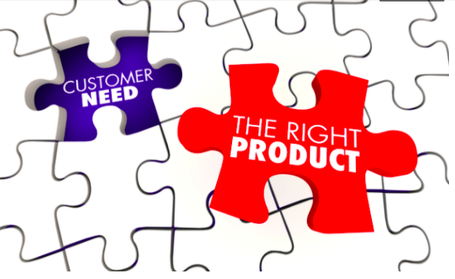|
Read any article on product/market fit and it will say "Talk to customers and focus on their problems. It took us 2 years but we found our product/market fit and sold for $X!". One thing? Simple! Talk to customers. But there's a startling lack of practical guides on how to actually talk to customers to elicit and qualify pain points. And there are so many false pains that you can latch on to in customer conversation if you don't know what you're doing (which may explain why that article invariably says "it took us 2 years to find what customers wanted"). Let's look at the reasons why actually getting to a real customer pain point is so hard, and how to do it right. Who Should be Talking to Customers? The more staff that talk to customers the better of course, to avoid ivory tower or "inside out" thinking that is disconnected from the real world. But really it depends on what you mean by talk. And it depends on what you mean by customers. Salespeople talk to customers, the CEO talks to customers, but their context is usually making a sale or discussing a venture. It's less about gaining insight into urgent, pervasive customer needs. There's a growing consensus that sales view on customers is important but incomplete. Someone else - marketing, product management, growth hackers, whatever you want to call them - a designated person or department must have a process of methodically surfacing the voice of the customer through exploratory interviews. It also depends on what you mean by customers. Pragmatic marketing defines 3 worlds: 1) your actual paying customers 2) your interested prospects 3) people in your target markets who have never heard of you. Companies that talk to their customers usually talk to group 1), have sales-only conversations with group 2), and often miss 3) entirely. But you need data from all these sources to get a complete picture of product/market fit. It's Not Customer Needs, It's Customer Problems "Customers will only tell us they want a faster horse." Executives say this as a reason why customer interviews don't work. And they're right, sort of. You shouldn't be asking customers what they want, you should be surfacing what problems them have. Specifically, problems that are urgent, pervasive and that they will pay money to solve. The customer has the problem, and then your team of experts defines and develops the solution. Marketers have known this for decades, but silicon valley CEOs continually discover this insight all over again. Check out How to Find Product-Market Fit by the CEO of Weebly who sold for $350M+. His core insight? Identify very precise customers problems, and ignore their solution ideas. What a revelation! Customer problems must be very specific. If you're in the security space, it's not enough to say "My customer's problem is that they don't want to be hacked." That's true, but go several layers deeper. If you're in sales consulting, it's not enough to say "My customer's problem is that they don't have enough revenue." Go several layers deeper. For every naysayer that brings up the faster horse quote, I have a quote back for them. “If I were given one hour to save the planet, I would spend 59 minutes defining the problem and one minute resolving it” - Einstein Product/Market Fit Interviews - What Could Possibly Go Wrong? Companies get sold on the idea of product/market fit interviews, and then they feel let down when it doesn't work. Unfortunately, there is a litany of things that can go wrong:
What else am I missing? There are so many classic blunders, because actually getting to real customer problems in an interview is hard. Each one of these bullet points could warrant an article in and of itself. Product/Market Fit Interviews - How To Do It Right The reality is that the skillset required is hard to find in a single person, let alone a team. You need to be knowledgeable enough about the market to have a customer's respect, salesy enough to systematically land meetings including "cold call" meetings, be empathetic, unbiased and persistent in the interview, and hyper-organized in documenting all of this insight so that it can be presented back internally. It's a tall order, and it's why getting to real customer problems, the key to product/market fit, is so elusive. The first step is to just nominate 1 person or team that has this responsibility, separate from sales or the CEO. If this could be you, don't wait to be nominated, just start doing it. If you can land even a dozen customer meetings and gather insight into a presentation back to your leadership, it will be an eye-opener for most. The other secret is to stick with it, which is obvious but difficult to put in practice. Like going to the gym, consistency is everything. You will get better at landing and conducting interviews and over time the insights you gain will be incredibly valuable. I would also suggest getting an external consultant to participate in product/market fit interviews. An unbiased consultant who is expert in landing meetings and conducting interviews, and who can quickly ramp up on your market fundamentals, will be able to accelerate getting to the insight faster, and train your own team along the way. I am biased of course since I *love* doing this detective work for clients and teaching them to fish. And there are plenty of others who specialize in customer interviews and product/market fit, such as the folks who wrote some of these articles that I recommend as follow-up reading:
0 Comments
Your comment will be posted after it is approved.
Leave a Reply. |


